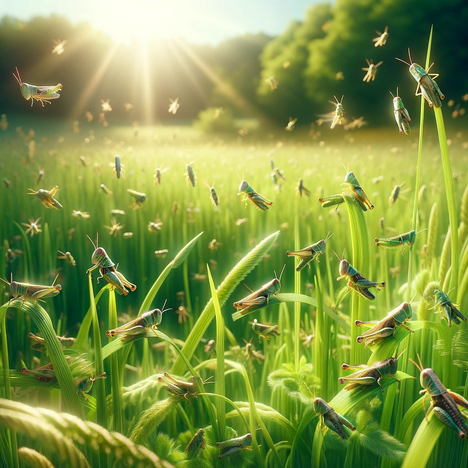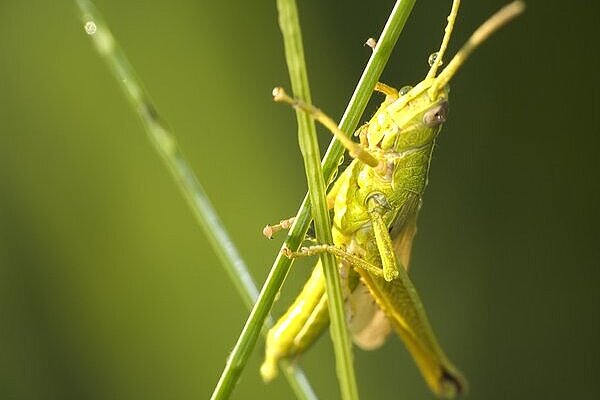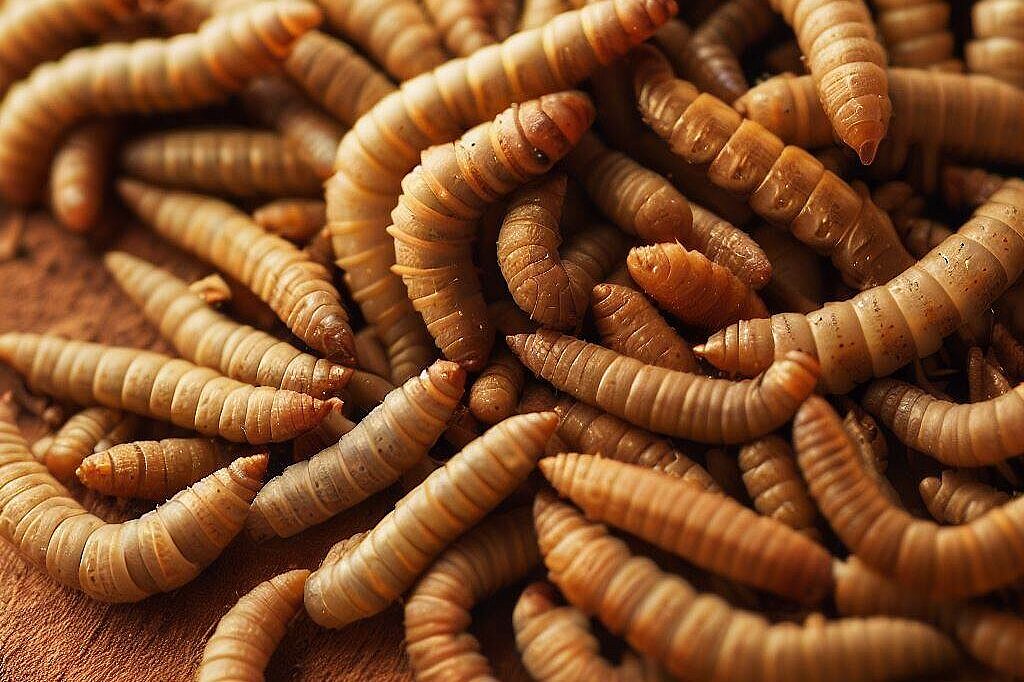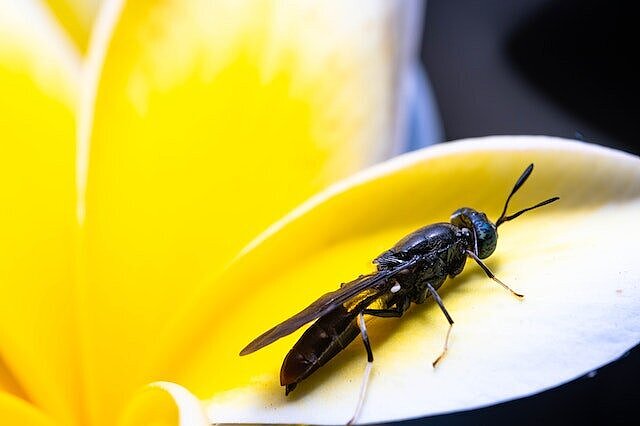Locusts

The search for sustainable and nutritious food alternatives has put grasshoppers in the spotlight as a potential ingredient for dog nutrition. These small insects, often associated with infestation, could actually be an environmentally friendly source of protein. But what about grasshoppers as part of our four-legged friends' diets? In this article, we take a closer look at the pros and cons of grasshoppers as an ingredient in dog food.
What are grasshoppers?
Grasshoppers belong to the order Orthoptera and are known for their ability to travel large distances in a short time, often in swarms that can cause significant agricultural damage. However, in many cultures around the world they serve as a food source for humans and provide a rich source of protein, vitamins and minerals.
Grasshoppers in dog nutrition
Advantages of grasshoppers
High protein content
Grasshoppers are an excellent source of protein. Protein is essential for growth, tissue repair and overall health in dogs. They can be an alternative or supplement to traditional protein sources such as beef, chicken or fish.
Environmentally friendly
Raising grasshoppers as a food source has a significantly lower environmental footprint compared to traditional livestock farming. They require less land, water and produce fewer greenhouse gases. Choosing grasshoppers could therefore be a more sustainable option for conscious livestock farmers.
Rich in nutrients
In addition to protein, grasshoppers also contain important vitamins and minerals such as iron, zinc and magnesium, which can contribute to the overall health of dogs.
Disadvantages and considerations
Acceptability
Not all dogs like the taste or texture of grasshoppers, which could limit the acceptability of this protein source.
Potential allergies
As with any new protein source, there is a risk of allergies or intolerances with grasshoppers. It is important to pay attention to the dog's reaction when introducing new food ingredients.
Availability and quality
The availability of grasshoppers as dog food is currently limited and it can be difficult to find sources that ensure high quality and safety of the insects. It is crucial that the grasshoppers are free from pesticides and other contaminants.
A step towards a sustainable future?
Grasshoppers as an ingredient in dog food offer an interesting combination of high nutritional value and sustainability. Their environmentally friendly production and richness in protein and essential minerals make them a potentially valuable addition to our dogs' diets. However, taste acceptance, the risk of allergies and the question of availability and quality are important considerations that need to be taken into account. For pet owners who are open to innovative food alternatives and value environmental protection, grasshoppers could be an option worth considering. Grasshoppers could indeed represent a leap towards the future of dog nutrition - a future that has both the health of our dogs and the protection of our planet in mind.
If you notice any signs of hypersensitivity or poisoning in your dog, you should see your vet immediately. We are not a substitute for a vet, but we try to be as accurate as possible. Every dog reacts differently and we recommend you get a second opinion or consult your vet if in doubt.
Stay healthy and take good care of your four-legged friend!😊
Similar to Locusts
Crickets are insects of the grasshopper order. They have six legs, two antennae and a long abdomen. They feed mainly on plants and live in various habitats around the world. Crickets have been used...
Mealworms are the larvae of mealworms. They are mainly used as food for reptiles, birds and fish, but are also increasingly used as an ingredient in dog food and snacks. Mealworms can be fed both...
The large black beetle, better known in its larval form as Zophobas morio, is a species of beetle that is often used as food in terrariums. The larvae, often referred to as superworms, are...
Herring protein is a high-quality animal protein obtained from the meat of herring. It is often used as an additive in dog food to increase the protein content and ensure a balanced diet. Herring...



